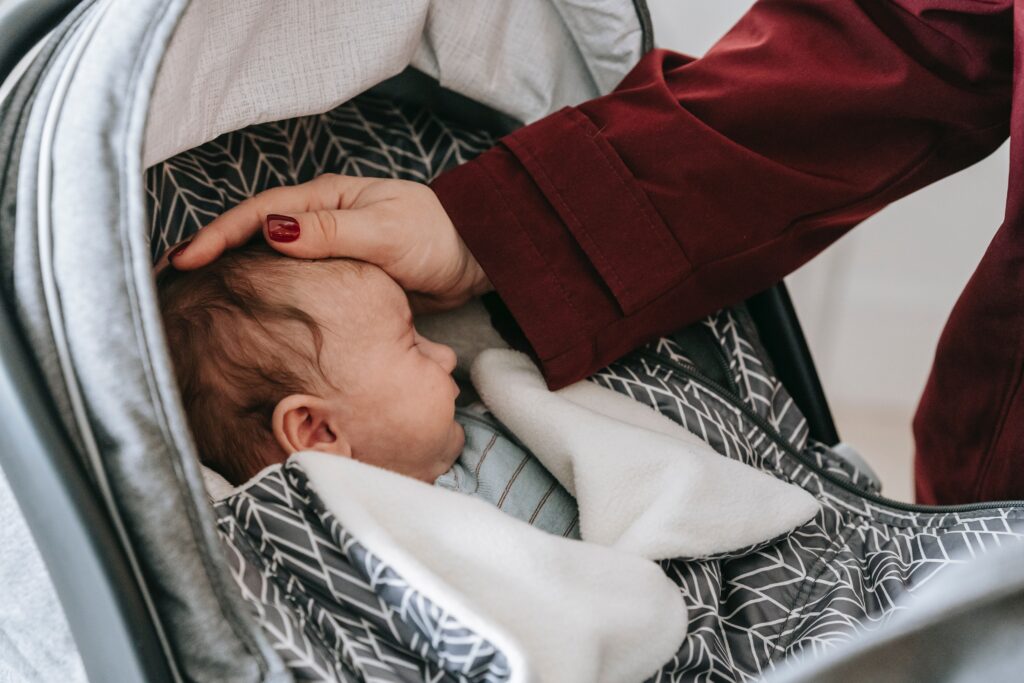Car Seat Safety for Babies with Torticollis: A Comprehensive Guide
Introduction
Torticollis can be a worrying experience for parents and carers of infants. It’s estimated that 0.5-2% of babies are born with this condition, which is why it’s important to understand the basics of car seat safety when caring for an infant with torticollis. This article will provide a comprehensive guide on how to safely secure a baby with torticollis in a car seat, including understanding the condition, choosing the right car seat, positioning your baby correctly, and when to consult a doctor.
Understanding Infant Torticollis
Torticollis is an abnormal head position where the neck muscles are too tight. This can restrict the movements of the head and neck, including flexing or rotating it. It can even cause the head to tilt in an unusual direction. In infants, this condition is usually caused by positioning during in-utero development. Symptoms include a flattened back of the head on one side, difficulty turning the head, and a visible tightness in the neck muscles when straightening out your baby’s posture. As your child grows, physical therapy and medication may be recommended to reduce the tightness of the neck muscles.
Importance of Proper Car Seat Usage
Using a car seat correctly is one of the most important things you can do to ensure your baby’s safety. When babies are properly secured in a car seat that fits their size and weight, the risk of injury or death is significantly reduced in the event of a car accident. For babies with torticollis, using the correct car seat and positioning your baby properly can help reduce their discomfort and also ensure they are safe while you’re driving.
Specific Car Seat Considerations for Babies with Torticollis
When choosing a car seat for your baby, make sure the seat fits the size of your baby. The headrest should be adjustable and the straps must fit snugly around the torso. If there is any looseness in the straps or if they are too tight, this could put your baby at risk of injury during an accident. Additionally, look for a car seat with extra padding on the shoulder straps to help keep them in place and reduce discomfort for your baby with torticollis.
Choosing the Right Car Seat for Babies With Torticollis
When selecting a car seat, you’ll want one that is suitable for newborns, typically up to age four or five depending on the brand and model. You should also look for a car seat that has a low center of gravity and is made from materials that can absorb the energy of an impact. Additionally, make sure it meets all safety standards set by your local government and is easy to install.
Positioning Your Baby in the Car Seat
To ensure your baby with torticollis is comfortable while riding in the car, it’s important to adjust the straps and headrest in a way that doesn’t put pressure on their neck. The shoulder straps should be adjusted so they are snug but not too tight, while the headrest should be high enough to support the head without putting any pressure around the neck.
Monitoring Your Baby in the Car Seat
It’s a good idea to monitor your baby while they are riding in their car seat so that you can be aware of any potential issues. If you notice that they seem to be having trouble breathing or if their neck is becoming strained, it may be time to stop and adjust the car seat. Additionally, you should try to make regular stops if your baby is on a long ride so that they can move around and stretch their neck.
When to Consult a Healthcare Provider
If you have any concerns about putting your baby with torticollis in a car seat or if they experience any discomfort while riding in the car, it’s important to consult a healthcare provider. They can provide additional guidance and help you select the right car seat for your child’s needs.
Conclusion
Car seats are an important safety device for babies with torticollis, so it’s essential to make sure that you choose the right one and position it correctly. It’s also a good idea to monitor your child while they are in the car seat and contact a healthcare provider if you have any concerns. With the right car seat, your baby can ride safely and comfortably so you can rest assured knowing that they are secure.

